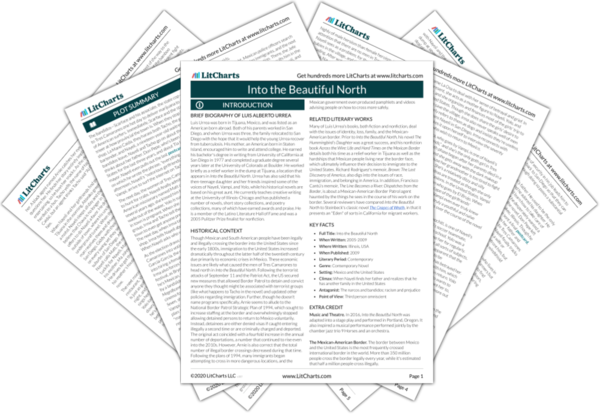Next
Summary
Into the Beautiful North Study Guide |
Next
Summary
|
Welcome to the LitCharts study guide on Luis Alberto Urrea's Into the Beautiful North. Created by the original team behind SparkNotes, LitCharts are the world's best literature guides.

Music and Theatre. In 2016, Into the Beautiful North was adapted into a stage play and performed in Portland, Oregon. It also inspired a musical performance performed jointly by the chamber jazz trio 9 Horses and an orchestra.
The Mexican-American Border. The border between Mexico and the United States is the most frequently crossed international border in the world. More than 350 million people cross the border legally every year, while it's estimated that half a million people cross illegally.